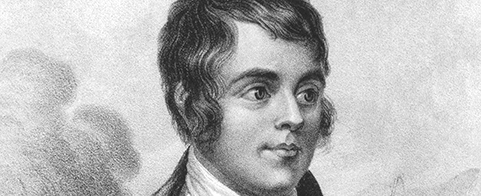On the 25 January every year, Burns Night is celebrated in Scotland. But what is Burns Night, and where does the celebration come from? We invited one of our resident Scots to explain to us.
Who is Robert Burns?
Robert Burns was a famous 18th century Scottish poet and lyricist and is considered by many to be the national poet of Scotland. One of his most famous poems is ‘Address to a Haggis’ which depicts the poet’s appreciation of the Scottish delicacy, haggis. After Burns’ death in 1796, his friends organised a Burns Supper in his honour and his works and poetry have been celebrated ever since on or around January 25 (his birthday).
What is Haggis?
Haggis is a traditional food which dates back as far as the 15th century. The dish is made of sheep’s pluck (heart, liver and lungs), minced with oats, onions and spices, and is traditionally presented in the casing of the sheep stomach. It is always eaten at the Burns Supper (vegetarian versions are available) alongside neeps (turnips) and tatties (potatoes).
At a Burns Supper, the poem, ‘Address to a Haggis’, is traditionally read out as the haggis is brought into the room on a silver tray. A bagpiper will often accompany this proceeding.
‘Address to a Haggis’
Below is an extract, and translation, from one of his most famous poems, ‘Address to a Haggis.’
This poem was written by Burns to celebrate his appreciation of Haggis. As a result Burns and Haggis have been forever linked, and this particular poem is always the first item on the programme of a Burns supper.
| Excerpt |
Translation |
|
Ye Pow’rs, wha mak mankind your care,
And dish them out their bill o fare,
Auld Scotland wants nae skinking ware
That jaups in luggies:
But, if ye wish her gratefu prayer,
Gie her [Scotland] a Haggis!
|
You powers, who make mankind your care,
And dish them out their bill of fare,
Old Scotland wants no watery stuff,
That splashes in small wooden dishes;
But if you wish her grateful prayer,
Give her [Scotland] a Haggis!
|




